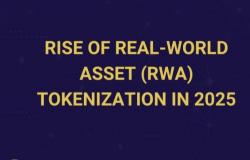
Web3 identity solutions represent a paradigm shift in how individuals control and manage their digital identities, moving from centralized corporate databases to decentralized, user-controlled systems. Decentralized identity (DID) and self-sovereign identity (SSI) frameworks empower users with unprecedented control over personal data, fundamentally reshaping digital privacy and online interactions in the process.
Traditional digital identity systems rely on centralized authorities—governments, corporations, social media platforms—that collect, store, and control user data. This centralized model creates privacy risks, single points of failure, and power imbalances where users have minimal control over their information. Data breaches exposing millions of records have become routine, demonstrating the inherent vulnerabilities of centralized identity management.
Decentralized identity systems leverage blockchain technology to enable individuals to create and manage digital identities without intermediaries. A DID is a globally unique identifier that individuals control through cryptographic keys, without requiring permission from centralized authorities. These identifiers can be used across multiple platforms and services while maintaining user control over what information is shared with whom.

The architecture of decentralized identity systems typically includes three components: DIDs as unique identifiers, verifiable credentials containing claims about the identity holder, and digital wallets where users store credentials and manage their identity. This structure enables users to prove aspects of their identity (age, credentials, memberships) without revealing unnecessary personal information, supporting privacy-preserving verification.
Verifiable credentials function as digital equivalents of physical credentials like driver's licenses, diplomas, or professional certifications. Issuing authorities cryptographically sign these credentials, making them tamper-evident and verifiable without contacting the issuer. Users store credentials in digital wallets and selectively disclose them to verifiers as needed, maintaining control throughout the process.
Self-sovereign identity principles guide the development of these systems. Users must have ownership and control over their identities, with the ability to access their data and control who can access it. Identities must be portable across platforms without being locked into specific services. Users should be able to prove aspects of their identity without revealing more information than necessary through selective disclosure and zero-knowledge proofs.
Practical applications of Web3 identity are emerging across multiple sectors. Education institutions issue verifiable academic credentials that graduates can share with employers without intermediary verification services. Healthcare providers enable patients to control medical records while selectively sharing information with different providers. Financial services use DIDs for KYC compliance while enhancing user privacy compared to traditional identity verification.
Zero-knowledge proofs enable powerful privacy-preserving verification scenarios. Users can prove they meet age requirements, income thresholds, or credential criteria without revealing actual values. For example, someone can prove they're over 18 without disclosing their exact birthdate, or verify their creditworthiness without exposing detailed financial information. These cryptographic techniques enable verification without unnecessary disclosure.
Interoperability challenges remain significant in the decentralized identity ecosystem. Multiple standards and implementations exist, including W3C DID specifications, Verifiable Credentials Data Model, and various blockchain-based identity platforms like Microsoft's ION, Sovrin, and uPort. Achieving seamless interoperability across these systems is crucial for mainstream adoption but remains an ongoing effort.
User experience represents another critical challenge. Managing cryptographic keys, understanding credential verification, and navigating decentralized systems presents complexity that must be abstracted for non-technical users. Wallet solutions are improving, but losing access to keys can mean permanent loss of identity credentials—a trade-off between self-sovereignty and the safety nets provided by centralized systems.
Regulatory frameworks are slowly adapting to decentralized identity concepts. The European Union's eIDAS regulation recognizes electronic identification and trust services, potentially providing a framework for integrating SSI systems. However, tensions exist between regulatory requirements for identity verification and the privacy-preserving goals of decentralized identity systems.
Looking forward, Web3 identity solutions are positioned to become fundamental infrastructure for digital interactions. As awareness of privacy issues grows and regulatory frameworks mature, decentralized identity systems offer alternatives that balance privacy, security, and functionality. The technology promises a future where individuals control their digital identities while maintaining privacy and security in online interactions.





